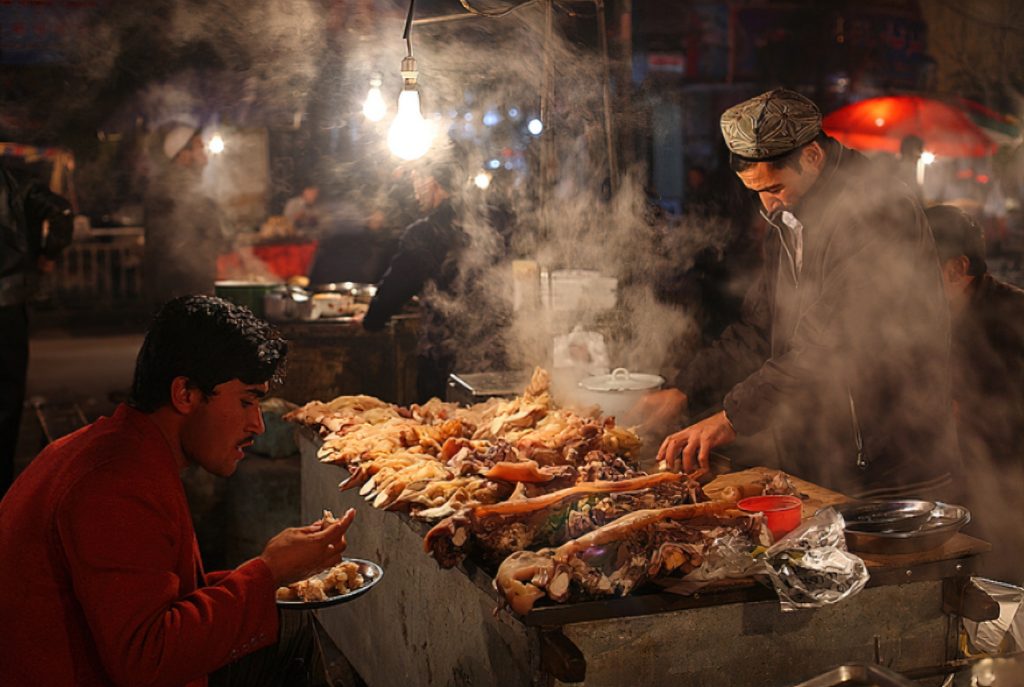A Journey Down the Silk Road
The Silk Road, a network of trade routes connecting East and West, has been a hub of cultural interaction for centuries. Its influence on cuisine is as profound as its impact on commerce, art, and religion. Let’s embark on a culinary journey, tasting the flavors of the Silk Road.
- Savouring Chinese Starters: Dumplings and Noodles
- Delighting in Middle Eastern Delicacies: Hummus and Falafel
- Tasting Mediterranean Marvels: Pasta and Ratatouille
- Exploring Persian Cuisine: Ghormeh Sabzi and Saffron Rice
- Journeying through India: Biryani and Chai
- Sampling Turkish Delights: Baklava and Turkish Tea
- Conclusion: The Endless Culinary Journey
Savouring Chinese Starters: Dumplings and Noodles
Our journey begins in China, the Silk Road’s easternmost point. Chinese cuisine is rich, varied, and full of flavors. For a quick taste, let’s start with dumplings. Jiaozi, a kind of Chinese dumpling, is a festive staple made of minced meat and chopped vegetables wrapped in a thin dough skin.
Next, we’ll sample Lanzhou beef noodles, a popular dish from Gansu province located on the Silk Road. This hearty dish consists of hand-pulled noodles, clear beef broth, tender radish slices, and succulent beef. It’s a perfect meal to enjoy after a long journey.
Delighting in Middle Eastern Delicacies: Hummus and Falafel
Moving west, we reach the Middle East, where chickpeas rule the culinary world. Hummus, a creamy dip made from chickpeas, tahini, olive oil, garlic, and lemon juice, is a universal favorite. Pair it with warm pita bread, and you’ve got a delicious, healthy snack.
Another chickpea wonder from this region is falafel. These deep-fried balls or patties are crispy on the outside, soft on the inside, and bursting with flavors. They’re typically served in a pita pocket with salad and tahini sauce – a must-try for any food lover.
Tasting Mediterranean Marvels: Pasta and Ratatouille
Our journey ends in the westernmost point of the Silk Road – the Mediterranean region. Here, we’ll taste two iconic dishes. First, pasta – specifically, spaghetti aglio e olio, an Italian classic that combines garlic, red chili flakes, and olive oil for a surprisingly complex flavor.
Finally, we savour ratatouille, a traditional French dish that celebrates the bounty of the region’s harvest. This vegetable medley, which includes eggplant, zucchini, bell peppers, tomatoes, and onions, simmered in olive oil and herbes de Provence, is a perfect culmination of our Silk Road culinary journey.
Exploring Persian Cuisine: Ghormeh Sabzi and Saffron Rice
Let’s take a detour and explore the rich flavors of Persian cuisine, another integral part of the Silk Road culinary heritage. We begin with Ghormeh Sabzi, a fragrant herb stew that is a staple of Iranian cuisine. This hearty dish combines a medley of sautéed herbs with kidney beans, dried limes, and succulent pieces of meat.
To complement Ghormeh Sabzi, we prepare a side of Saffron Rice. Infused with the golden hue and aromatic scent of saffron threads, this fluffy, fragrant rice is a perfect accompaniment to the herbaceous stew.
Journeying through India: Biryani and Chai
As we continue our journey westward, we arrive in India, a land known for its vibrant flavors and aromatic spices. Here, we indulge in Biryani, a flavorful rice dish made with aromatic basmati rice, tender pieces of meat, and a blend of warm spices. Each bite of Biryani offers a symphony of flavors, making it a must-try for every food lover.
Accompanying our meal is Chai, a popular Indian beverage. This spiced milk tea, infused with cardamom, ginger, cloves, and black pepper, is a comforting drink that perfectly represents the warm and inviting nature of Indian culture.
Sampling Turkish Delights: Baklava and Turkish Tea
Our culinary journey along the Silk Road wouldn’t be complete without a stop in Turkey, the bridge between Asia and Europe. Here, we treat ourselves to Baklava, a sweet pastry made of layers of filo filled with chopped nuts and sweetened with syrup or honey. Its rich, sweet flavor and crunchy texture make it a beloved dessert across the region.
To wash down the sweetness of the baklava, we sip on Turkish Tea. Brewed in a unique two-tiered teapot, this tea is served strong and without milk, often in tulip-shaped glasses. It’s a fitting end to our meal and our culinary journey.
Conclusion: The Endless Culinary Journey
The Silk Road is more than just a historical route – it is a culinary odyssey that brings together diverse cultures and cuisines. From the far east in China to the far west in the Mediterranean, each region contributes its unique flavors and food traditions. So, get adventurous and explore these culinary treasures right from your kitchen!

